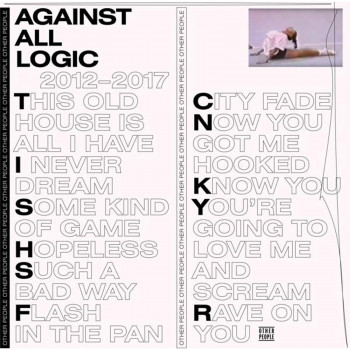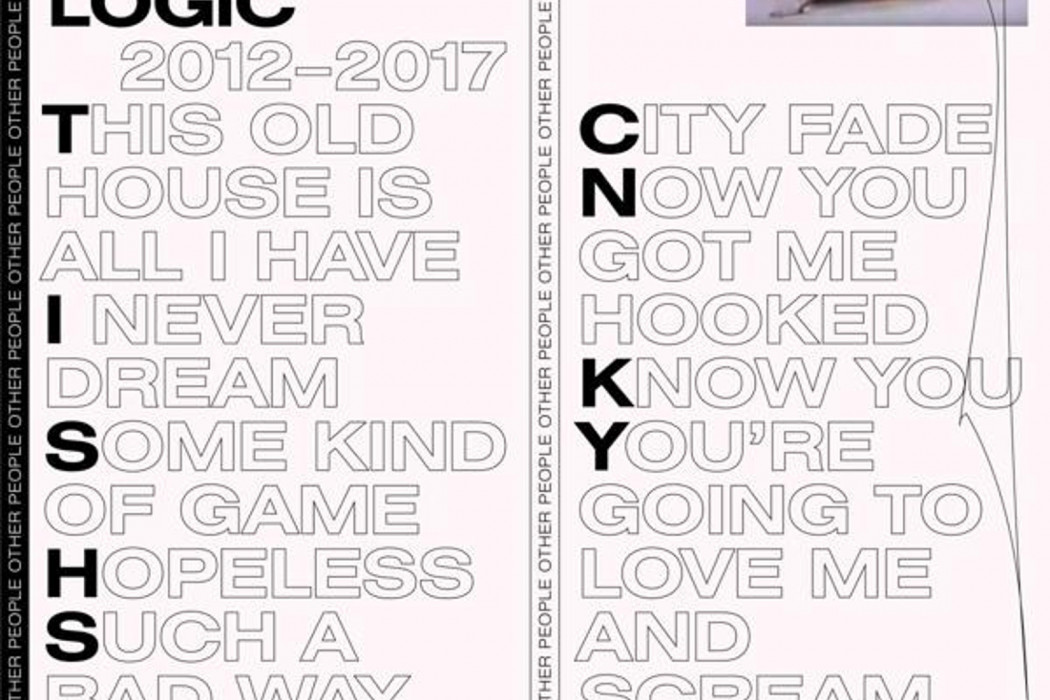Our third rock is currently abuzz with the single-use sounds of Drake, Beyonce, Jay-Z, Shakira, J Balvin, Miley Cyrus, Post Malone et al. Sorry gang, smoke ‘em if you got ‘em, but you’ll still throw ‘em away after a couple drags. There is better music out there. For every James Blake, there’s Against All Logic.
This is not an album by Nicolas Jaar. This is not a finely tuned set of tracks build together from the ground up. This is not meant to be an album of the year.
But you wouldn’t wouldn’t guess it; wouldn’t expect Against All Logic was an old high school pseudonym; a seldom swung swingset; an unfinished Pokemon Red version; a favourite kettle left to sit; wouldn’t think he sat on these cuts; a collection of texts unsent; one word responses; questions “u up?,” no—you and I, casual observers of dance and house music wouldn’t know these things—the things that intoxicate Jaar, lock him like a Whitney Houston video on repeat, remove him from the parties for a Friday and settle him into a mood melancholic—just him and his music. You wouldn’t know he wants to take it slower than residents would advise, but we should all know he’s not looking for advice: “So I said: “Oh, I shouldn’t really play another song.” But then I did, and I played an even slower one. And then I left thinking: “OK, maybe this is what this career is going to be like … and I guess I’m OK with that.” Not fitting in is a part of Jaar’s plan. Not doing what is expected is something coded into his creative DNA, our millennial mindset. Generations past have complained vigorously about the radio music of the generation present; and it comes no different now, as my Uncle linked me another YouTube video detailing why modern music S-U-C-K-S. Oh it was bright and bold and burning across my eyes; an asteroid a hair too close.
But I didn’t click on it. I didn’t need too. It doesn’t answer the problem: he’s tuning in to the wrong stations.

Our third rock is currently abuzz with the single-use sounds of Drake, Beyonce, Jay-Z, Shakira, J Balvin, Miley Cyrus, Post Malone et al. Sorry gang, smoke ‘em if you got ‘em, but you’ll still throw ‘em away after a couple drags. There is better music out there; better habits to spill gas on; for every DVSN, there’s Choker, for every Rihanna, there’s Janelle Monáe, for every Avicii, there’s Daft Punk. For every James Blake there’s Jamie xx. DJ Koze. Four Tet. Mount Kimbie. Nicolas Jaar. To be fair, most of these guys play a brand of electronic dance music that flirts with house and deep house, but doesn’t go the full tropical pastiche, doesn’t smoke the Majorcan jamón, or run away like an Ibizan weekend. Instead they stay subversive—no trip, just drip. No drops, just thoughts. They play EDM on the verge of existential crisis. Chewing through beats and synths as a lost philosopher gnaws on isms and ists; absurdist jungles, nihilist steps, surrealist glitches. They scald on these points, but rarely do they burn up like a meteoroid so as to make the radio notice. At least, not like Moby had done 20 summat years ago with the mega-record Play. Not like Against All Logic should be doing now. Because that surly nom du jour, Against All Logic, a friend you can call AAL, should come with the content warning sticker. Not because it delves into the verbally profane or horrifically detailed, but because it smashes those pretty stained glass expectations that house music can’t inspire God’s.
Using the children of Gospel choirs, splicing Sixties soul, sampling spacefunk, Against All Logic works to cooperate the ancient forerunners of EDM with its modern genealogy, borrowing Miles James Kirkland’s “Doing It Right,” The Cookies “I Never Dreamed,” or the Dramatic’s “Now You Got Me Loving You.” Generally speaking electronic music largely just borrows or cuts lyrics to bare essentials; sometimes they don’t even make complete propositions, just short statements to complement the mood. AAL does not change the formula—but he does contort the lyrics around to make different points. Quoting Kanye’s bloodcurdling “AAAAAHHHHHHHHHHH, I’m a God,” into a cry for help in “Such a Bad Way,” or torturing the Delfonics’ line “And oh, you’re gonna love me, you’re gonna wanna hug me and squeeze me” into a tone-twisted refrain for more pain:
Oh, you’re gonna love me
You’re gonna wanna hurt me
And scream
Logic isn’t just trying to find a Divine spark, but also juxtapose it with brimstone sentiments.
Even in “I Never Dream” the music refrains about getting closer, closer, closer, closer, closer to something — what that something is, listeners will have to interpret for themselves. Logic dares to pull epochs together in multimedia format, taking Rilke’s old-school German line on the sweetness of the star-stuffed country sky from “Hetären-Gräbern” and riffing on it. Instead of rigorous heavens, it’s the cost of city life that is denying Logic entry. The cut pays tribute to pushing cultures together in multimedia format; manipulating the archaic into the futuristic.
The only problem comes when Logic fetishisizes the past to the point of unraveling his presents—“This Old House” committing the most grievous sin of essentially bookending the main chuck-rhythm riff of “Doing It Right” with industrial tinsel and a horn choir to signify the apocalypse. As an album-opener, it demonstrates a dastardly combination of menace and mystery but as a track it flirts dangerously with that line of transformative work and lifted inspiration. It wouldn’t be noteworthy if Logic did this but once; yet he does it twice, lifting the main chorus and percussion from Jorge Santana’s “Ain’t No” and setting it to a higher BPM with a downbeat snare and some punchier pianowork (electric or otherwise) on “Know You.” Both “This Old House” and “Know You” work well; but is this because of our good friend AAL or the originals? Does he transform them? Or does he just cover them? These are the questions that beleaguer our comparative literature friend and whether by accident or design, he challenges his listeners to contrast the evolution in music. So when it comes to the more tasteful samples or call backs, like when Logic juxtaposes an “Extreme Ways-esque” piano riff to the German child’s choir and decries being shutout from heaven; when he uses the Dramatics and then the Delfonics to showcase a switch from the saintly to the abominable love; or when he uses synths to mimick the horns of providence on “Such a Bad Way” and then reverbs a Yeezy statement to a muddy Luciferian bass “I am a God,” Logic is asking us musical questions. Is house music too sinful to save, too referential to create, too depraved to give a damn about? Is the music Godly, or is it just unhinged? A tribute or just a cop-out?
Most of them won’t care to answer these questions, but what really matters is that an artist is asking them.
With all this philosophy woven behind his music, Against All Logic trumps any weakness in pacing or mood; the lulls aren’t haphazard maybe b-sides; they actually work as reflective pools of pitter-patter periphery percussion, what with their cymbals, snares and hi-hats. On the bigger cuts, just listen to how those short vocal samples pump the soul with emotion and then ignites it with certain synthesizer melodies, horn choirs, drum machine breakdowns, timbales breakdowns or even cowbell breakdowns. It feels like the main run of this record should punch like a super-saiyan, and yet, it never quite commits the full kamehameha. In a weird reverse of fortune, it’s exquisite but not exceptional, a dance record broken up by moments for discussion. But no matter: the record still executes. Even if the moments themselves don’t go like nitro; they win the race. Every part is made better by Jaar’s sense of pacing, with the hits building off each and then letting the record glide off the momentum before ending with a victory lap “Rave on U.” The record, despite being a self-described cobbling together of various tracks from various years, sounds unified in its effort to build a cohesive experience.
The internet has taught millennials two things: one, life is a DJ set, a photo-album of moments, and two, the treasures are out there—you just have to go out and find them. And sometimes the path isn’t straightforward; maybe you have find these things indirectly. Word-of-mouth, befriending a local, stumbling through town or just plain finding a guide. Against All Logic, I missed the train for a whole year when, in a discussion of albums of the year, Jaar’s side project was name dropped in the Facebook group chat as if from the sky, intrigued I wrote it down on albums to check out for my list (which will go unpublished, thank you). Later, on a train from Vienna to Venice, what was found was not merely some trash from space—but a meteor shower that after six years had crossed orbit, lit up the atmosphere and made marks in listening habits. 2012-2017 had arrived and I’m glad to have finally experienced it. It’s music I should have known; and now, I do know.
— — — —









